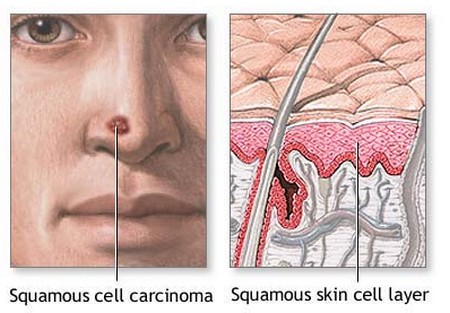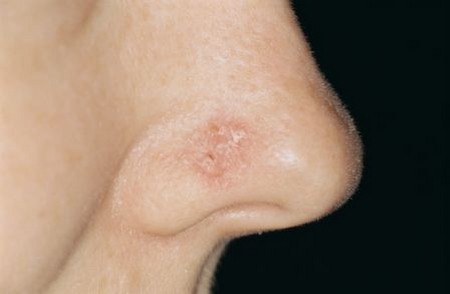Skin cancer is one of the most common and wide spread forms of human cancer. However, skin cancer is not considered as life-threatening, it is pretty much preventable form of cancer. Annually, so many people get affected by skin cancer. The number of people affected by skin cancer per year is estimated to be over 1 million and the cases of skin cancer are increasing each year. In United States nearly half of the people who live to the age of 65 will develop skin cancer at least once in their life.
The most common cause of skin cancer is an excessive exposure to the sun’s UV rays. They common symptoms or signs of skin cancer include the change in the appearance of skin, i.e. a new growth or a sore that will not heal.
There are three major conditions or types of skin cancer. They are given below in the order of least to most dangerous type.
Squamous Cell Carcinoma
Squamous Cell Carcinoma is usually developed on the body at places which have been more exposed to the direct sun such as mouth, ears, and the face.
Usually, a bump turns into an open sore (ulceration – a reddish, flat crusty spot) is a clear symptom of it. A bump often gets bigger with time and won’t heal.
It needs a proper treatment as it has the tendency to spread rapidly to the other parts of the body such as bloodstream, nerve routes and lymphatic system, if left untreated.
Basal Cell Carcinoma
It is the most common type of skin cancer as it accounts for over 75% of skin cancers diagnosed. This cancer usually develops on face, neck and hands. It doesn’t spread to other parts and can be treated easily.
The common symptoms include a sore that usually oozes or bleeds, a reddish area, a pink pearly bump, and a yellow or white area like a scar.
Melanoma
Among the two, melanoma is considered as the most dangerous and malignant type of skin cancer. Although, it can develop anywhere on the body, arms, legs and trunk are the most affected areas. It is treatable only if diagnosed early.
The most common symptoms include a mode, freckle, and a spot that changes its size, shape and color and having an irregular outline.
The best possible preventive measure is to avoid excessive exposure to the direct sun. Try to stay under a shade when you are out and wear sunscreen.

